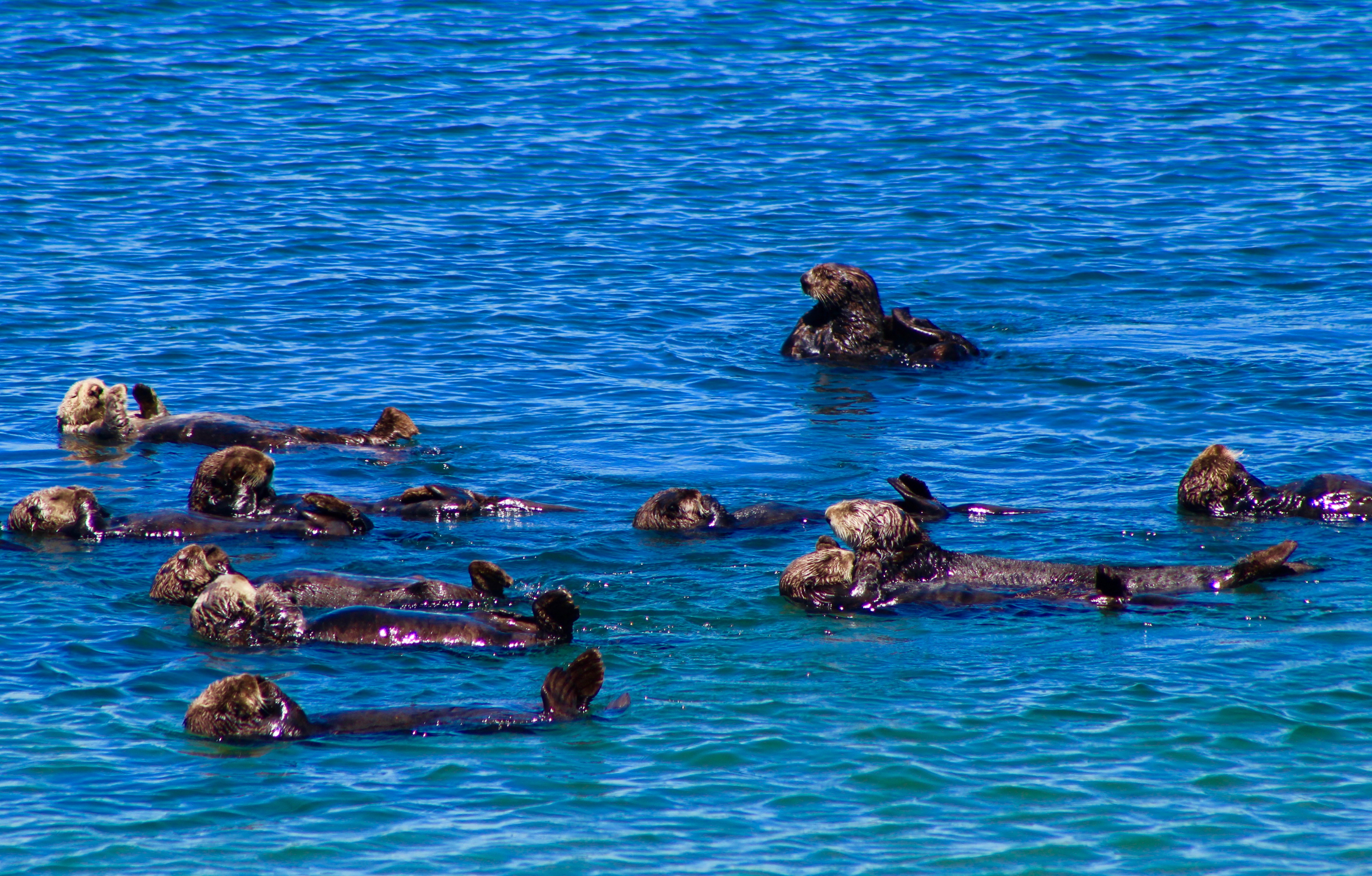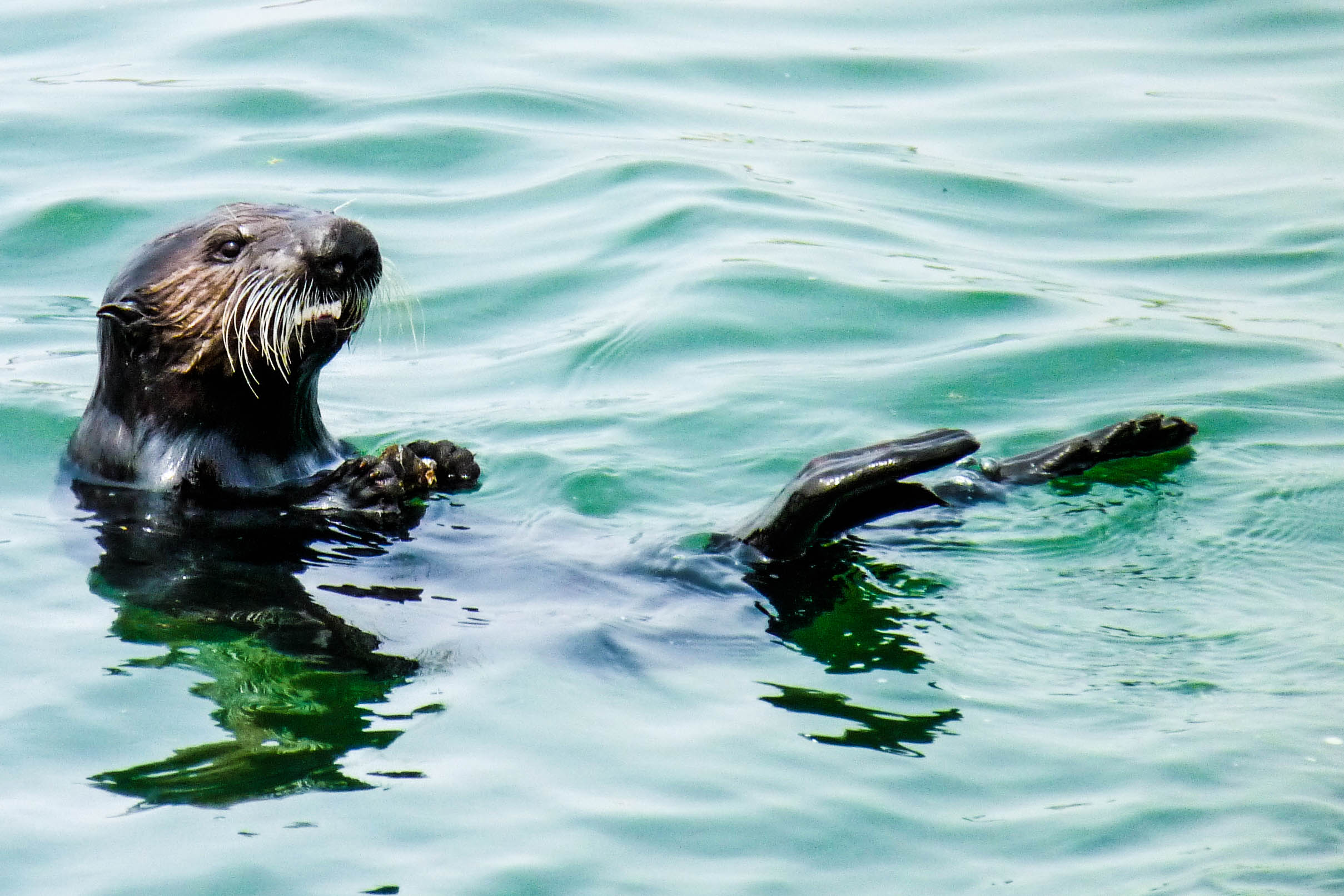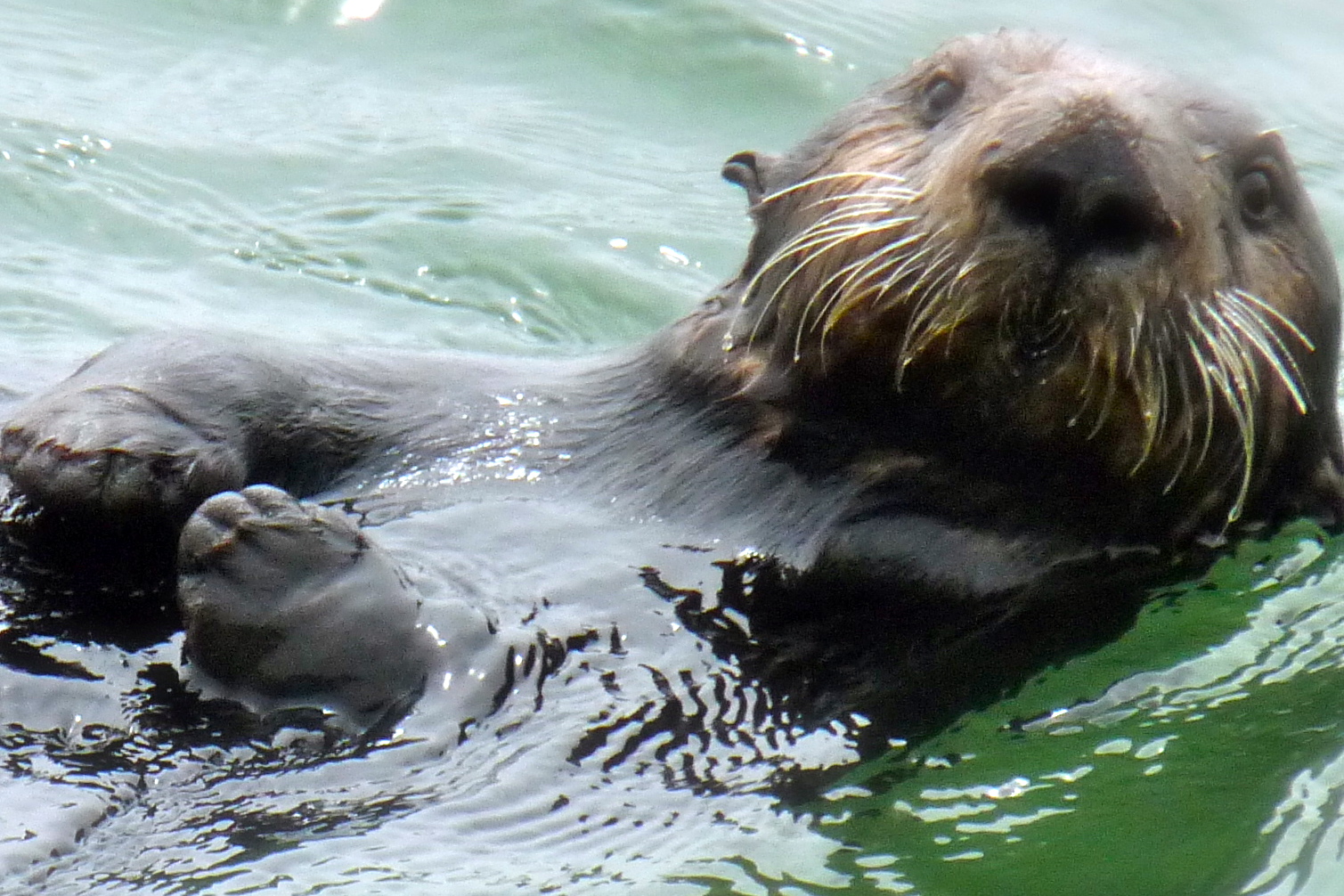Sea otters at Elkhorn Slough | Joe Livernois
By Moises Velasquez-Manoff / Bay Nature
In California, which has lost an estimated 90 percent of its saltwater marshes, an outstanding question is whether degraded or lost marine wetlands can be easily restored. In Elkhorn Slough, a meandering seven-mile-long inlet in the middle of Monterey Bay, Monique Fountain, tidal wetland program director at the Elkhorn Slough National Estuarine Research Reserve, is testing the possibility.
The slough has lost about half its wetlands in the past 150 years. Some areas have subsided between four and six feet.
“We’re a sediment-starved system,” Fountain told me one breezy, overcast day in July. The Salinas River was once connected to the slough, but no longer. Its water is now diverted for agriculture. “We just have bathtub rings of marsh left,” she said, pointing across the slough’s main channel to a strip of green on the other side. Her fear is that as sea levels rise, the remaining marshland will be completely drowned and disappear.
Fountain’s goal is to prevent that eventuality and to make the system self-sustaining again—to give the marshes the space to migrate upslope and help them keep up with rising seas by, she hopes, enhancing their ability to accumulate organic material on their own. Last year, she oversaw the transfer of 200,000 cubic yards of soil into the slough. We were standing on the result—a tan, muddy plain adorned with the occasional raccoon footprint. A lot of work went into making this place suitable for salt marsh plants. Backhoes outfitted with special low-ground- pressure tires (so they wouldn’t sink into the mud) carved out the meandering tidal channels based on old maps. Volunteers helped plant 35,000 native plants. And the effort seemed to be paying off.
Seagrass beds are important to consider when regarding climate change not only because they can sequester carbon in soils, but also because seagrass may buffer against ocean acidity.
Fountain marveled aloud at the red-tipped pickleweed plants, ground-hugging succulents that define these saltwater marsh ecosystems. “That’s natural recruitment,” she said, pointing to several.
A $3 million grant from the state’s greenhouse gas mitigation fund helped finance the project. Part of what helped win the money, Fountain suspects, were the hard numbers on how much carbon the slough marshes could sequester. They came from Drexel University wetland scientist Elizabeth Watson. Based on how the marsh functioned in the past, the 61-acre piece of land could absorb 156 tons of carbon per year aboveground and 129 below, Watson estimated, yielding an average of 4.6 tons per acre per year. And saltwater marshes don’t produce nearly as much of the powerful greenhouse gas methane as freshwater marshes do.
Later that day, seeking a different vantage point, I glided into the slough on a kayak. The swift current swept me past an otter holding steady in an eddy behind a pier. Minutes later, I was flying over eelgrass beds, thick and healthy in the water below.
Enlarge

Seagrass beds are important to consider when regarding climate change not only because they can sequester carbon in soils, but also because seagrass may buffer against ocean acidity. As the ocean absorbs carbon dioxide gas from the atmosphere, it becomes more acidic, which makes it more difficult for shell-producing organisms, such as clams and mussels, to make their shells. Because seagrass removes carbon dioxide from the water directly, some scientists suspect that seagrass beds may protect, on a local scale, shell-producing organisms from growing acidity.
“We always talk about restoring ecosystems; we rarely talk about restoring food webs.” Brent Hughes, Biologist at Sonoma State University
One intriguing finding from study of the slough: otters seem to keep seagrass beds healthy.
Otters, which once lived up and down the California coast, were mostly extirpated by fur-trapping in the 19th century, and then, in the early 20th century, began expanding from a remnant population of about 50 in Big Sur. In 1984, a few meandered into Elkhorn Slough.
Years later, as he reviewed a decades-long record of seagrass in the slough, Brent Hughes, a biologist at Sonoma State University, noticed that the health of the beds improved after the otters showed up. And this improvement came despite the ever-larger quantities of agricultural runoff pouring into and polluting the slough.
Otters eat enormous quantities of urchins, crabs, and other invertebrates—one-quarter their own body weight per day. After ruling out other possibilities, Hughes wondered if the creatures’ voracious appetite was somehow changing the ecosystem, to seagrass’s benefit.
He tested the possibility by installing a series of large cages that prevented otters from foraging in parts of the seagrass bed in the slough. With the otters absent, he noted, algae began smothering the seagrass.
Enlarge

What Hughes ultimately worked out through observation and lab experiments was that crabs ate smaller, grazing animals—sea slugs and cockroach-like isopods that would otherwise eat the algae that smothered the grass. So more otters meant fewer of those crabs, and more small grazers that kept seagrass healthy. Without otters, on the other hand, crabs became numerous, small grazers declined, and algae grew unchecked, choking the seagrass. Like the Sacramento Delta, the slough exists in a thoroughly human-dominated landscape. Farms and a livestock operation surround the wetland. The twin smokestacks of the Moss Landing Power Plant loom above. The slough receives copious runoff from agriculture, which encourages growth of the very algae that smothers eelgrass. And yet Hughes’ finding suggests that otters and maybe other keystone species can enhance ecosystem resilience, improving the system’s overall health.
Enlarge

The slough is not only teeming with marine life—diving white pelicans, frolicking otters, and harbor seals with big, black eyes; according to Hughes’ research, its seagrass beds are healthier than those in much more pristine but otter-less Tomales Bay.
The implication is that when thinking about the health and restoration of wetland ecosystems—and by extension their ability to sequester and store carbon—scientists might want to consider not just the plants that pull carbon from the atmosphere, but also the animals that keep those plants healthy.
“We always talk about restoring ecosystems,” Hughes told me. “We rarely talk about restoring food webs.”
This story originally appeared in Bay Nature Magazine.
Have something to say about this story? Send us a letter.